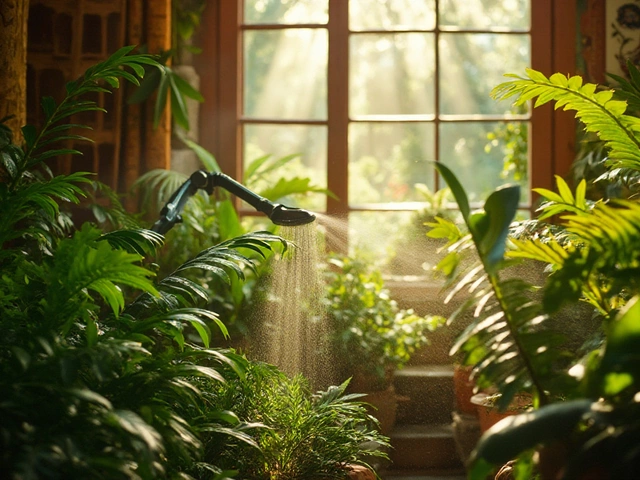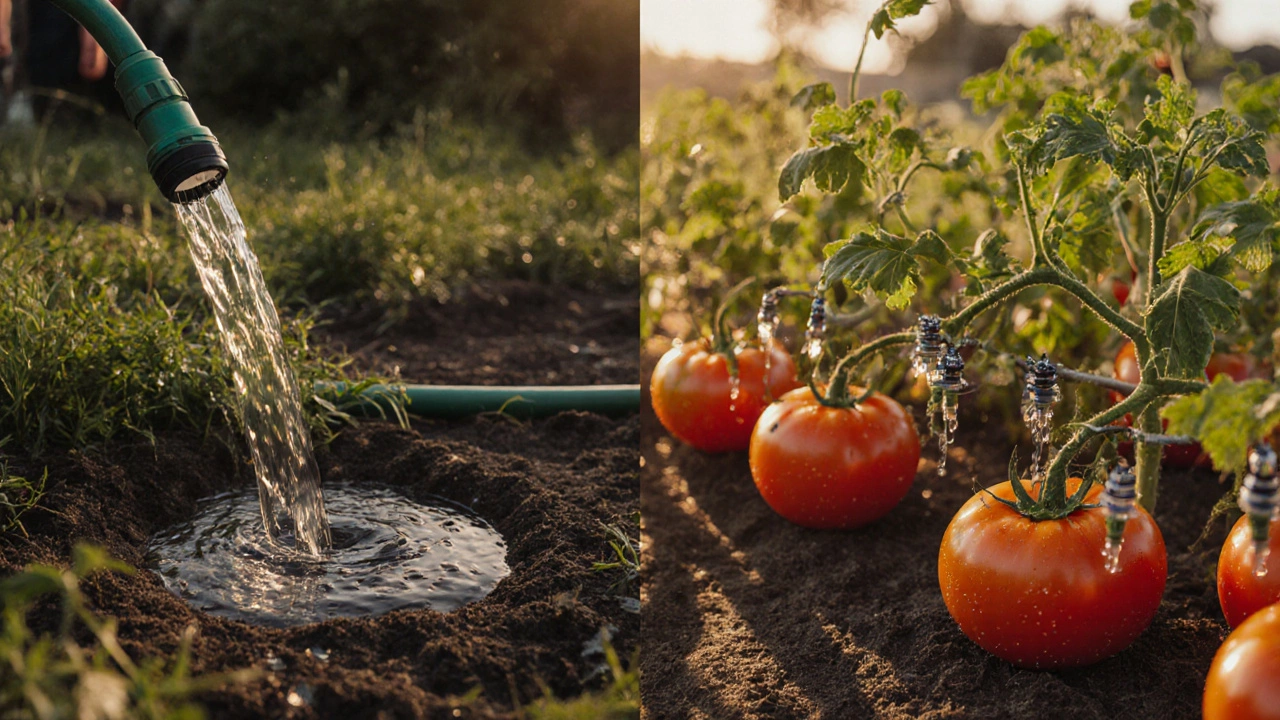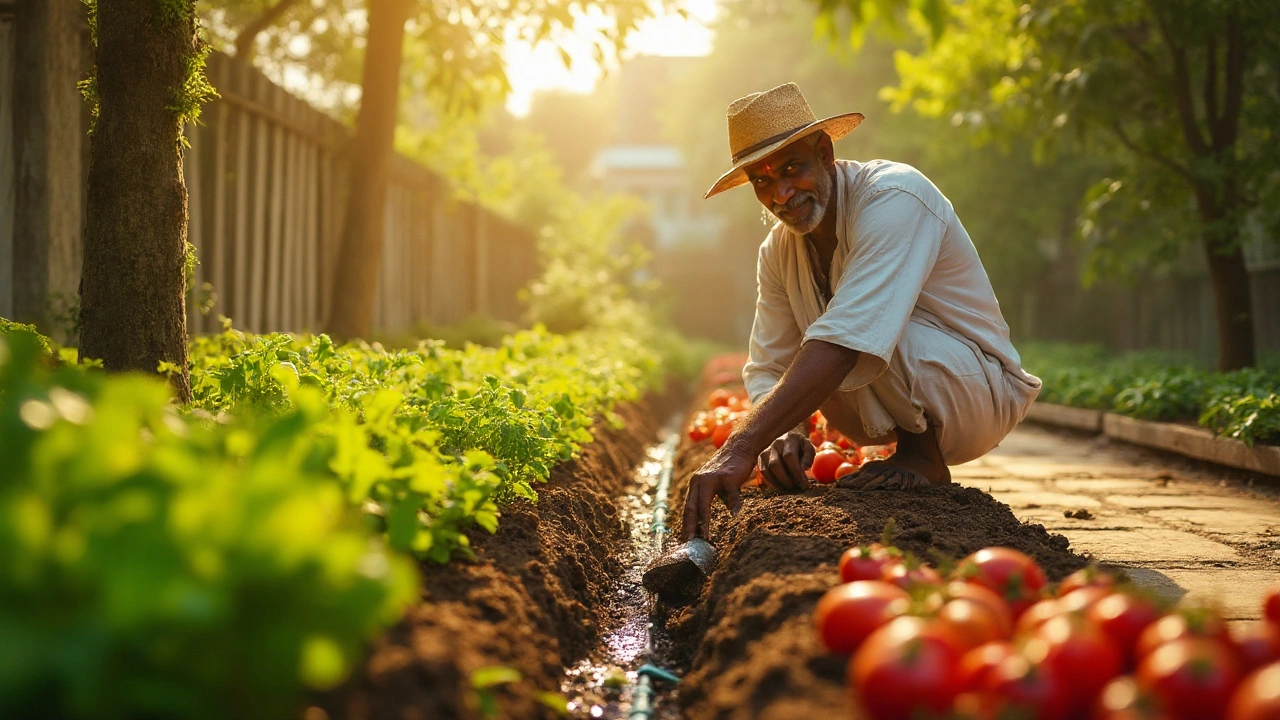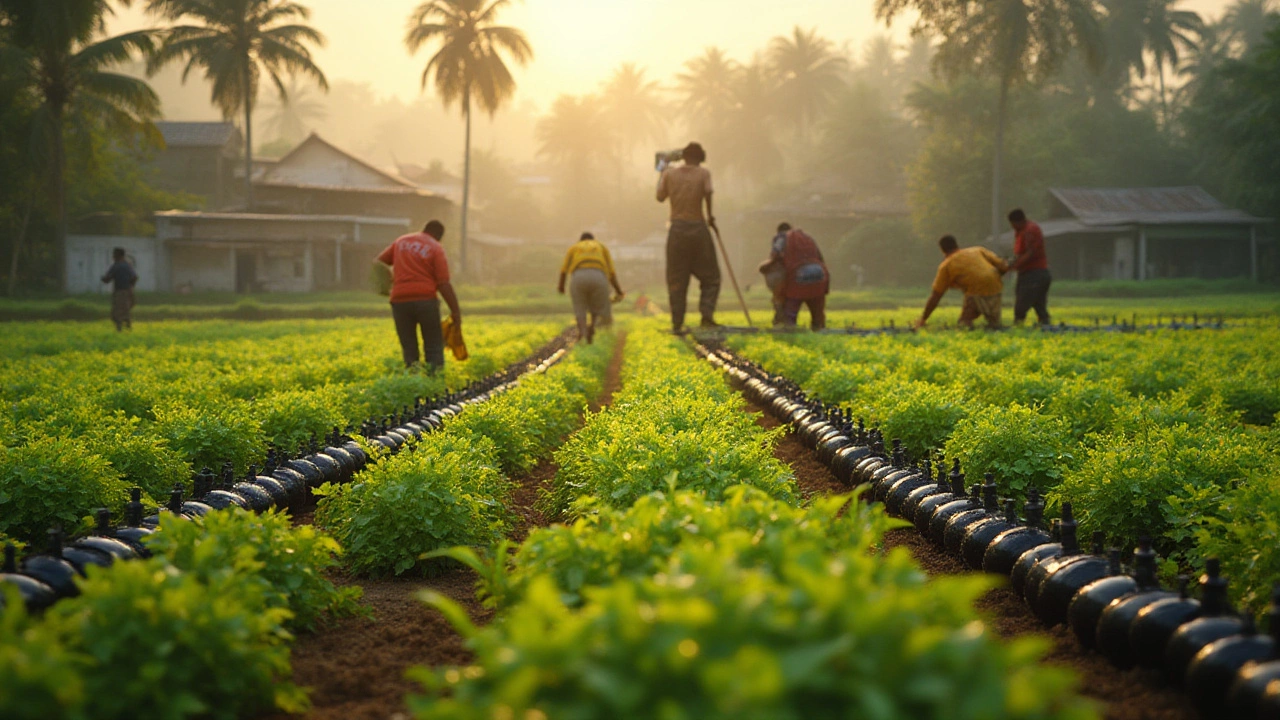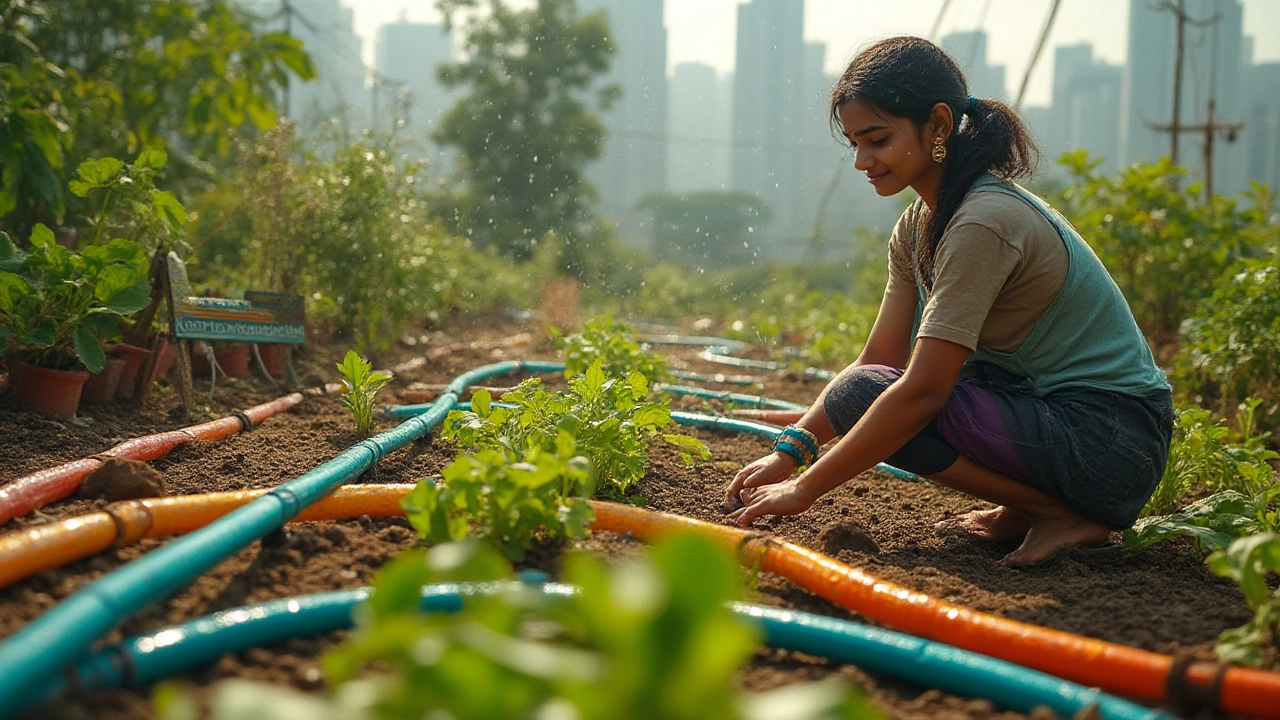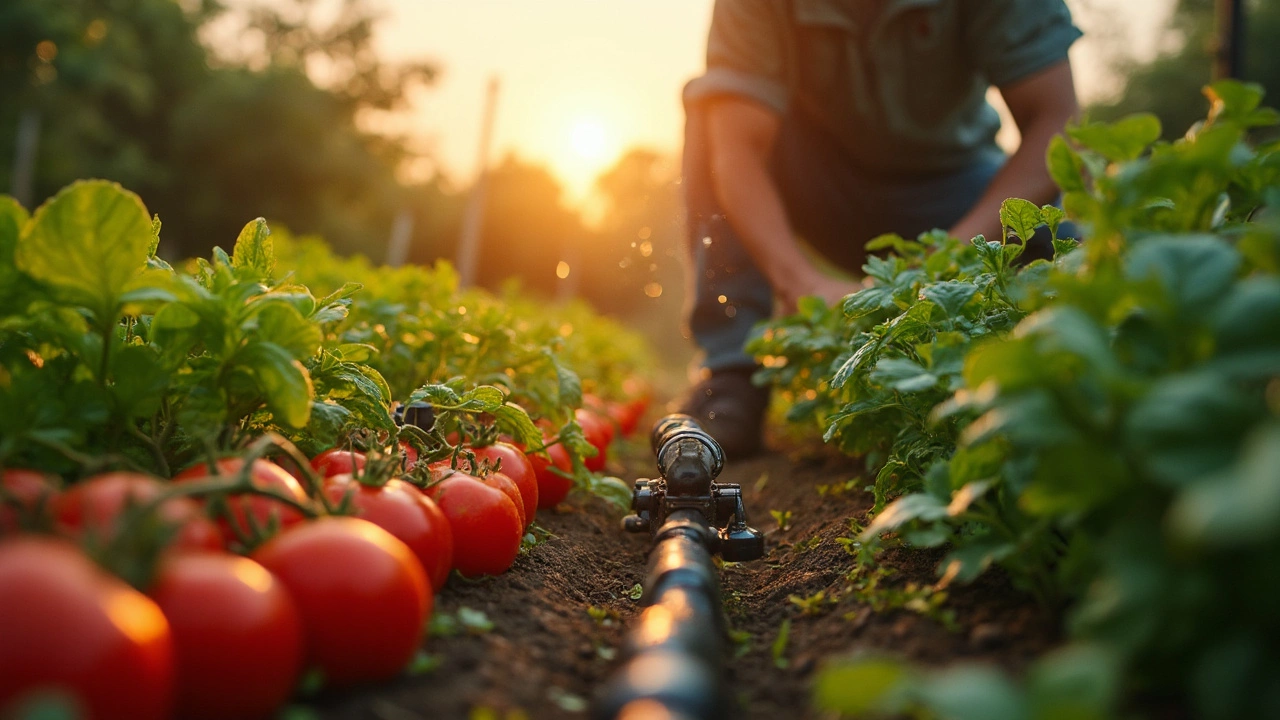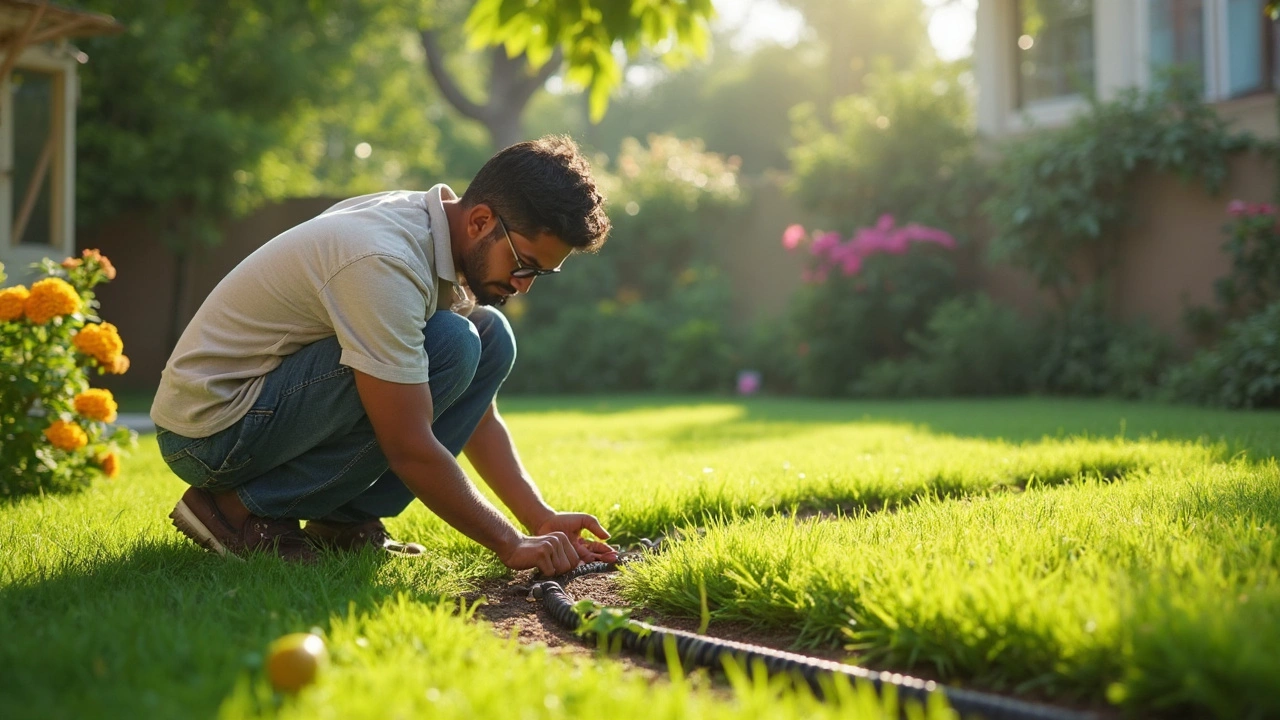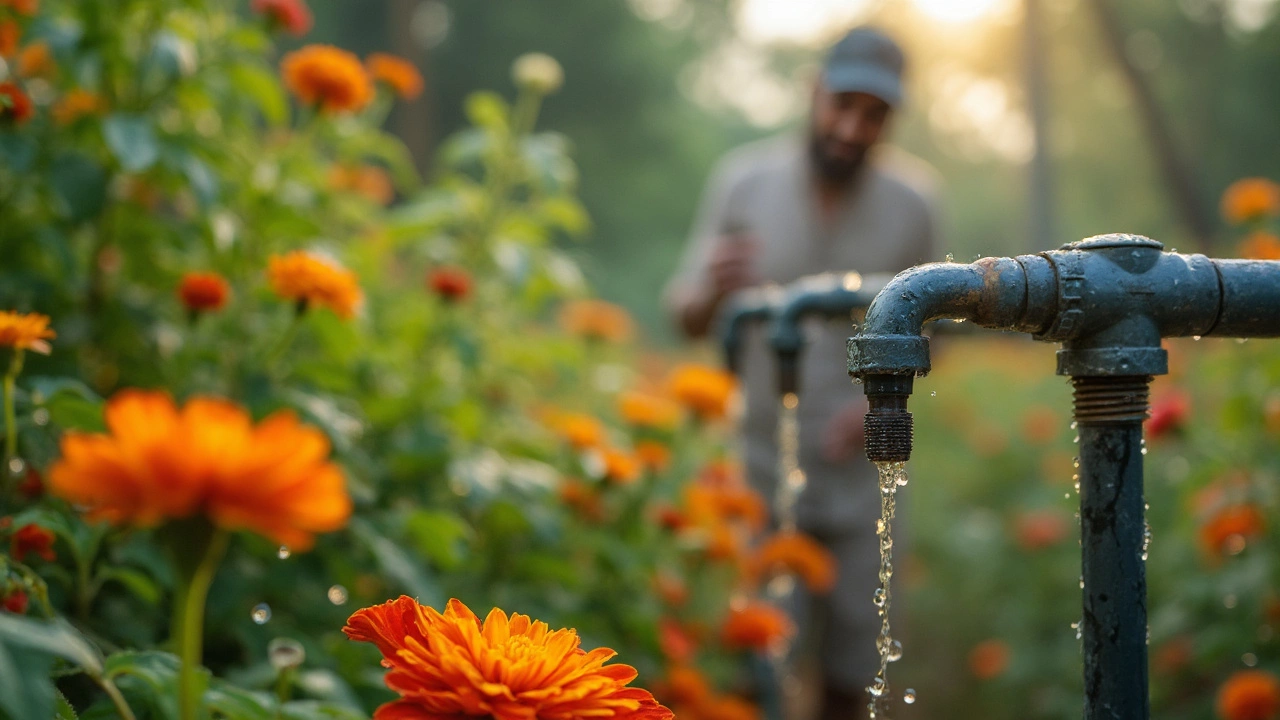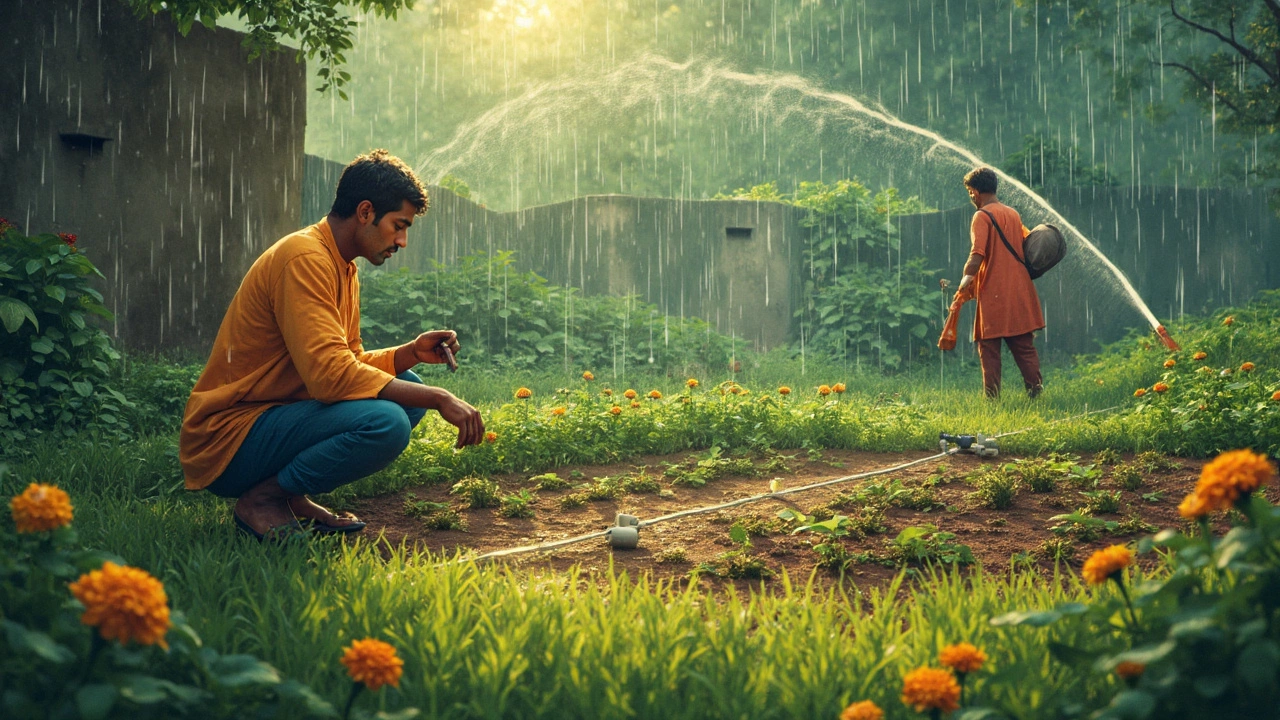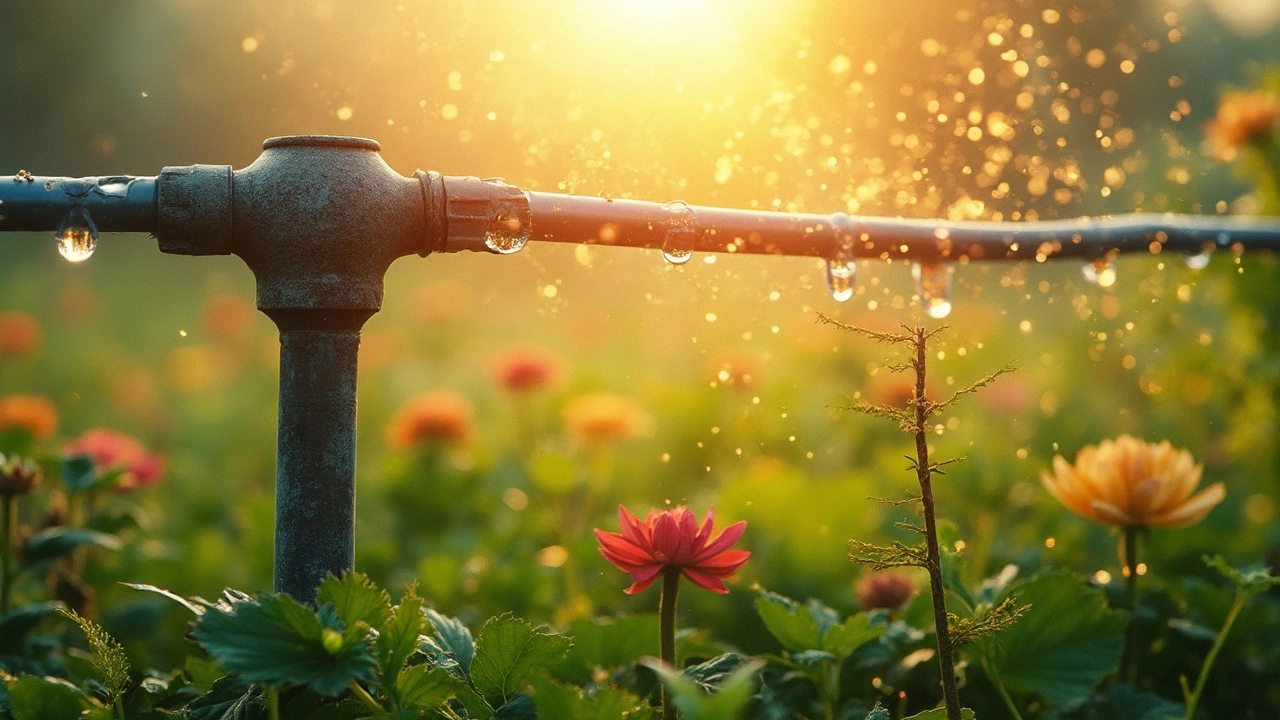Drip Irrigation: Practical Tips, Costs & DIY Guides for Every Gardener
If you’re looking for a watering method that saves water, cuts waste and keeps plants happy, drip irrigation is worth a look. It delivers water right where the roots need it, so you get less evaporation and more growth. Below you’ll find quick answers to the most common questions, plus links to in‑depth articles that cover everything from burying lines to choosing the right kit.
We’ve gathered the best advice for Indian gardeners, so you can decide if drip irrigation fits your garden, budget and time schedule. Whether you’re a hobbyist with a few pots or a farmer with a large plot, the basics stay the same: plan your layout, pick the right components, and keep the system clean.
Why Choose Drip Irrigation?
First off, drip irrigation can lower your water bill by up to 50 % compared to sprinklers. Water goes straight to the soil, bypassing the hot air that dries out droplets. That means less runoff and fewer weeds, because only the plants you want get wet.
Second, it’s flexible. You can use drip tape for long rows of vegetables, or individual drip lines for shrubs and trees. Want to hide the system? Bury the tubing a few inches deep (or under mulch) for a clean look and protection from mowing.
Finally, the system can be automated with a timer, so you set it once and forget it. Even if you live in a region with erratic rain, you can adjust the schedule to match the weather.
Common Questions and Quick Answers
How deep should drip lines be buried? Typically 2–4 inches for most soils, but sandy soil may need a little deeper to stay in place.
Is drip irrigation expensive? The upfront cost is higher than a simple hose, but you save on water and labor over time. Look for kits that match your garden size to avoid overspending.
Drip tape vs. drip line? Tape is thin and cheap, great for flat beds. Line is thicker, more durable, and better for raised beds or uneven terrain.
Will the lines clog? Clogs happen if the water has a lot of minerals or debris. A simple filter at the source and regular flushing (once a month) keep flow steady.
Can I mow over drip lines? Yes, if you lay them at least an inch below the surface or cover them with mulch. Use protective strips if you’re worried about accidental cuts.
Each of these topics is explored in detail in the articles below. For example, “How Deep Should Drip Irrigation Lines Be Buried?” walks you through soil testing and step‑by‑step burial. “Why Is Drip Irrigation So Expensive?” breaks down kit components so you know where to save.
Ready to try it yourself? Our DIY guide shows you how to plan a layout, cut tubing, and connect emitters without calling a pro. You’ll learn the tools you need, common mistakes to avoid, and how to test pressure before you start watering.
Keeping the system running long‑term is just as easy. Flush the lines every few weeks, check for cracked emitters, and replace filters annually. With a little maintenance, a drip system can last 10‑15 years.
In short, drip irrigation gives you control, saves water, and can fit any budget with the right kit. Browse the full list of posts to dive deeper into each sub‑topic and start building a smarter garden today.
Why Drip Irrigation Is Better Than Soaker Hoses for Your Garden
Drip irrigation delivers water directly to plant roots, saving water, reducing weeds, and improving yields compared to soaker hoses that waste water and promote uneven growth.
How Deep Should Drip Irrigation Lines Be Buried? Guide for Optimal Water Delivery
Learn the right burial depth for drip irrigation lines, factors that affect it, and step‑by‑step installation tips for healthy gardens.
Drip Irrigation: Why Isn’t Everyone Using This Efficient Watering System?
Why do so many gardeners, farmers, and homeowners skip drip irrigation, even with its proven water savings? We dig into the roadblocks, mistakes, myths, and the real challenges holding it back.
Why Is Drip Irrigation So Expensive? Breaking Down the Real Costs and Saving Tips
Drip irrigation saves water but often comes with a hefty price tag. Explore what makes drip systems costly and learn actual ways to cut expenses without losing efficiency.
Drip Tape vs Drip Line: The Ultimate Guide for Efficient Watering
Confused about drip tape or drip line? Cut through the confusion with this 2025 hands-on guide, packed with real comparisons, practical tips, and clear stats for gardeners.
Main Types of Drip Irrigation: Surface vs. Subsurface Explained for Gardeners
Discover the key differences between surface and subsurface drip irrigation, with practical tips, real-life examples, and useful data for modern gardeners.
Drip Irrigation: Which Type Really Saves You Money?
Wondering which irrigation style won't empty your wallet? This article cuts through the fluff, digging into what makes drip irrigation systems cost-effective for both small and big gardens. Get real info on setup costs, ongoing expenses, and a few trade-offs most people don't talk about. Find smart ways to stretch your dollar even further, without sacrificing healthy, green results. If low-hassle and affordable is what you want, you'll get answers here.
Drip Irrigation System Life Expectancy: What to Really Expect
Curious how long a drip irrigation system lasts? This article breaks down the real-life lifespan of drip systems, the factors that stretch or cut short their life, and the simple habits that keep them running for years. You’ll get insights on what to inspect, what actually fails first, and practical tips to avoid common setbacks. Ideal for homeowners, gardeners, or anyone planning a new setup. Get the honest facts before you invest or upgrade.
Can You Mow Over Drip Irrigation? What You Need to Know
Wondering if it's safe to mow over drip irrigation pipes? This article clears up the risks and gives simple tips to protect your watering system while keeping your lawn in top shape. Learn how to spot trouble, prevent expensive repair jobs, and find the best way to set up your drip lines for mowing season. Get real solutions so you can stop stressing every time the grass gets tall.
How Many Drippers Can I Run on One Line? Drip Irrigation Limits Explained
Ever wondered how many drippers you can actually hook up to a single drip line before it all goes sideways? This guide breaks down the real limits with simple math, practical examples, and hands-on tips. Discover how flow rate, water pressure, and line length impact your setup. Learn the mistakes people make and how to dodge them, so your plants get the right amount of water every time. Set your system up the right way the first time, without the guesswork.
Underground Sprinklers: Are They Really Worth the Investment?
Wondering if underground sprinklers are worth the money and hassle? This article cuts through the hype, comparing underground sprinkler benefits with more hands-on drip systems. We’ll look at what setup really takes, water usage, maintenance headaches, and what actually helps your lawn or veggie patch. Get practical advice so you don’t waste time or cash on a system that doesn’t actually fit your needs.
Why Does My Drip Line Keep Clogging?
Clogged drip lines can ruin your garden's irrigation system. Understand the common causes of clogging, from debris and mineral buildup to poor filtration. Discover practical solutions to maintain clean drip lines, ensuring efficient water flow. Simple tips make a world of difference in preventing clogs and improving plant health.
- 1
- 2
About
Drip Irrigation
Latest Posts

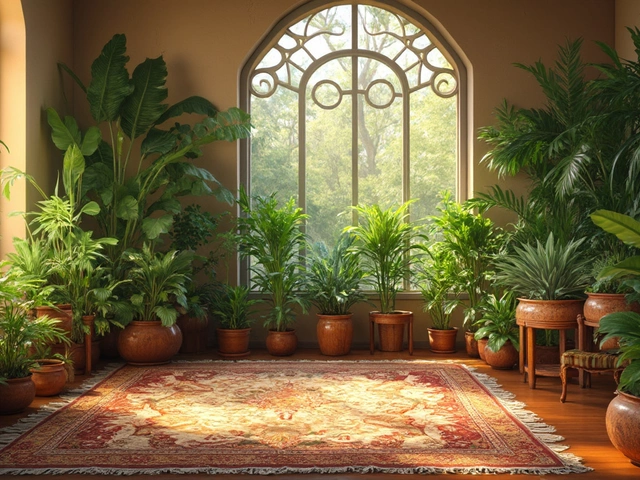
Should I Mist My Happy Plant? Unpacking the Benefits and Myths
By Alden Thorne Apr 4, 2025

Sacred Plant in India: Why Tulsi Rules Flower Gardens
By Alden Thorne Jun 22, 2025

The World's Healthiest Vegetable: Unveiling the Top Nutritional Powerhouse
By Alden Thorne Jul 28, 2025
